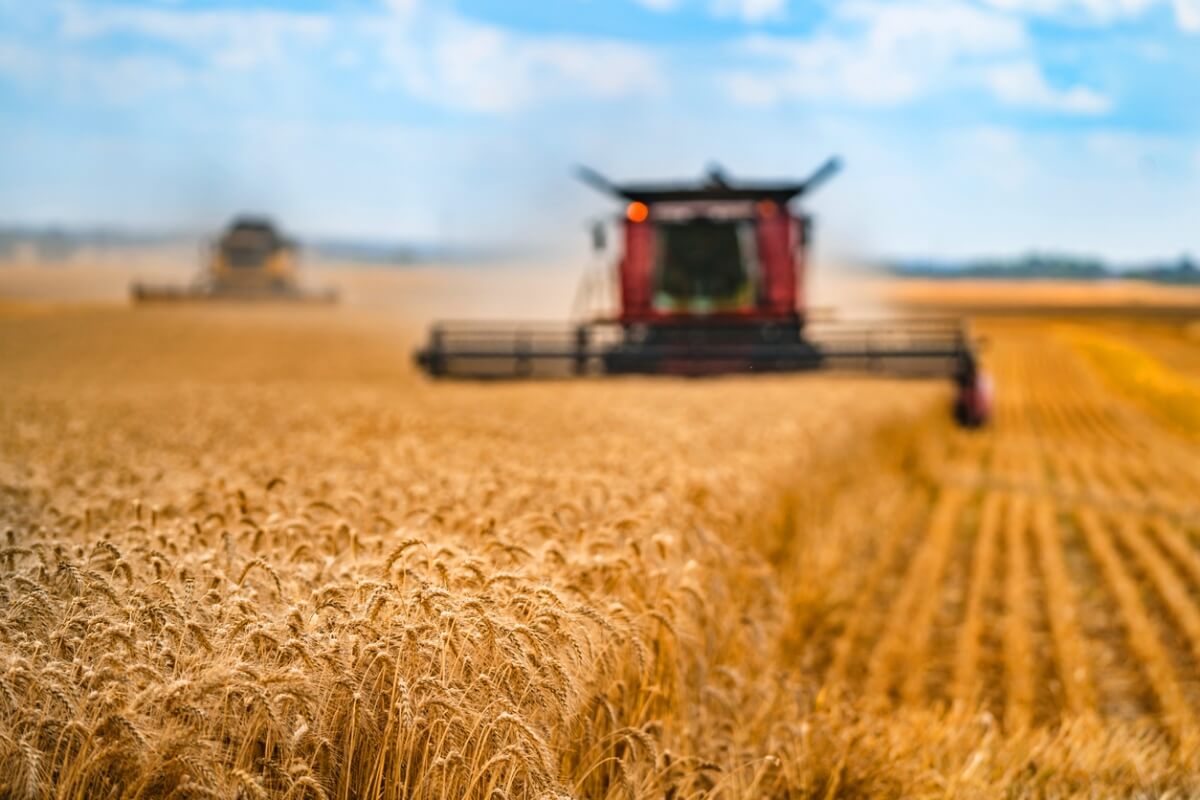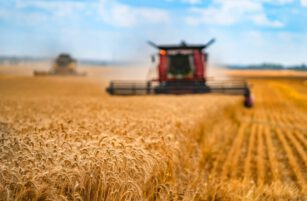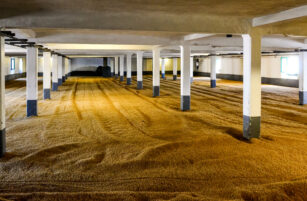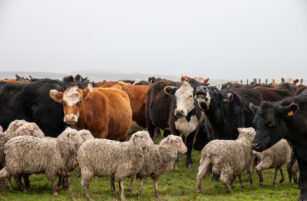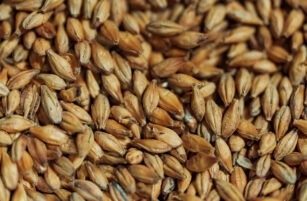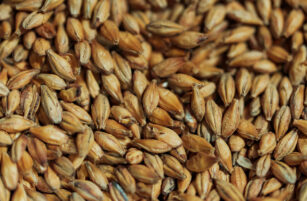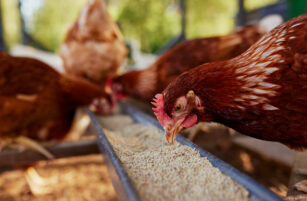Insight Focus
Monogastric livestock are highly efficient feed converters. They require concentrated feed for energy and nutrients. Their simple digestive systems result in high productivity.
Monogastric livestock, with their single stomachs, such as pigs and poultry, differ from the ruminants we previously discussed in their superior ability to break down and utilise concentrate feeds, resulting in high levels of enterprise output.
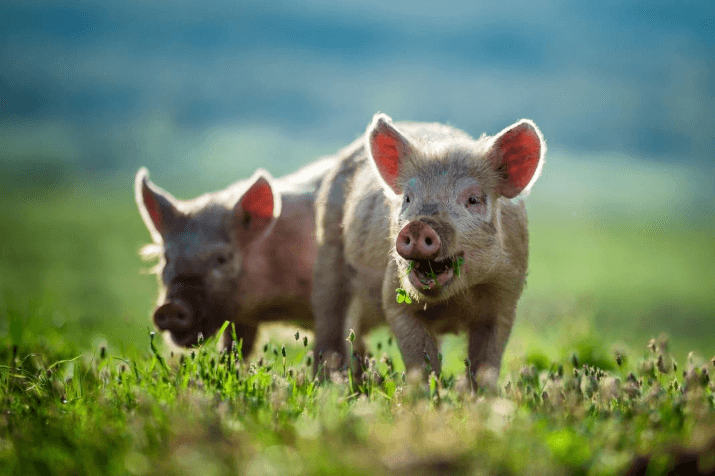
Monogastric livestock can be fed high ‘concentrate’ feeds, such as cereals, high-protein meals and feed supplements, providing the necessary energy and nutrients they require. This enables them to avoid consuming the large volumes of ‘bulky’ feeds demanded by ruminants.
Simple, Speedy and Productive
A simple and extremely efficient digestive system is a major reason why pigs and poultry have such high farm enterprise productivity. Whether in the production of piglets, eggs or liveweight gain for meat, the conversion rate of concentrate feed to output is impressive.
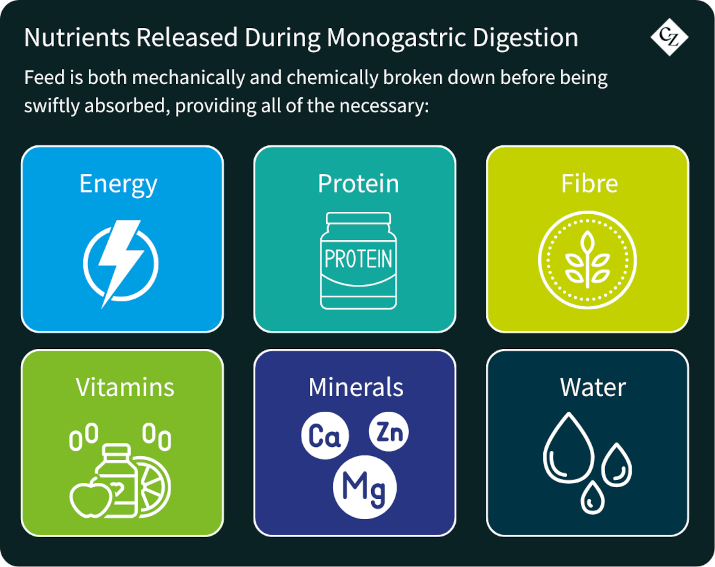
The Process
There are fundamentally two slightly different digestive systems for monogastric livestock: that of monogastric pigs and that of poultry, which can be referred to as ‘modified’ monogastric.
The Pig
Food begins the digestive process with physical chewing by the teeth. This stimulates saliva secretion, which aids mastication and swallowing.
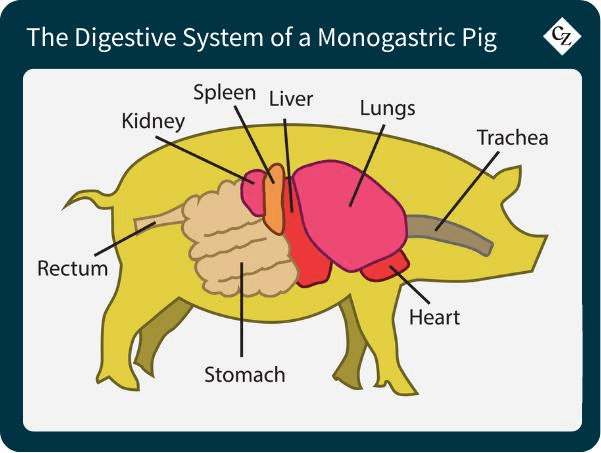
Food continues through the oesophagus and into the stomach. Here, acidic gastric juices chemically break down the food before it passes into the duodenum and small intestine.
The movement of food through the digestive tract is aided by peristalsis, which is the continuous contraction and relaxation of the tract wall.
In the small intestine, food is further digested with the help of bile, along with pancreatic and intestinal juices. It is in the small intestine, which has a large surface area, that most nutrient absorption takes place before proceeding into the large intestine.
The large intestine is the destination for absorption of the significant volumes of water used throughout the digestive process. The remaining waste is then passed on for excretion.
Poultry
Poultry are often referred to as modified monogastric, given their slightly different digestive anatomy.
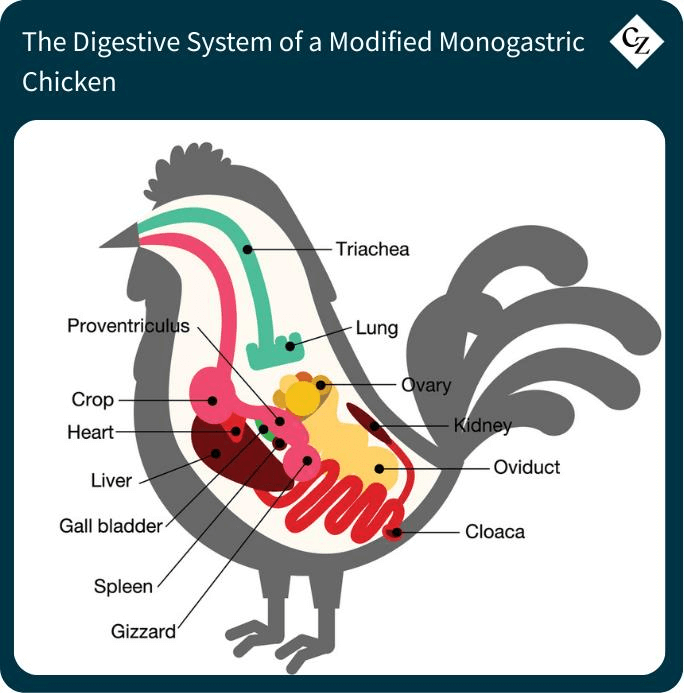
Poultry do not have teeth like pigs, and thus food is collected by the beak and passed through the oesophagus into the crop. The crop can be considered a storage facility from which food passes to the stomach, known as the proventriculus.
As poultry do not possess the ability to chew food, food then passes on to the gizzard. The gizzard contains grit, which grinds down the food particles in a similar fashion to chewing as the walls of the gizzard contract and relax.
Once ground into smaller parts, the small and large intestines function very much like those of a pig, with their primary objectives being food and water absorption, respectively. From here, the waste is passed on to be excreted.
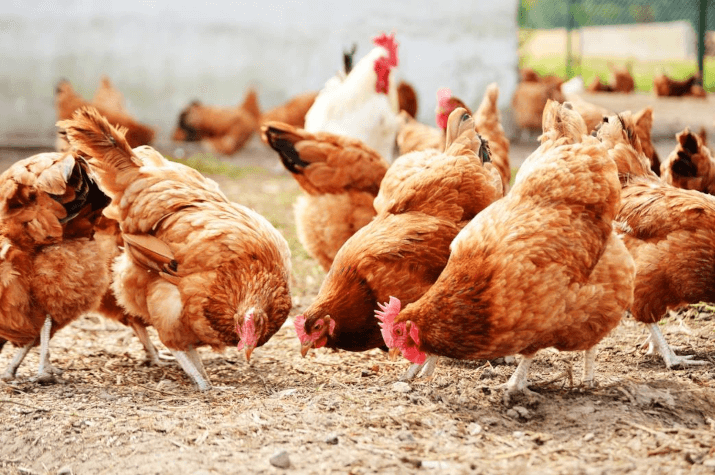
The Complete Diet
In summary, monogastric livestock:
- Require feed that contains all the vitamins, minerals, proteins and nutrients needed for production, as, unlike ruminants, they are unable to produce any of their own.
- Consume smaller volumes of high-nutrient food, in contrast to the large quantities of bulky feeds eaten by ruminants.
- Possess a digestive system that is simple, functional and highly efficient in converting feed into productive livestock enterprise output.
